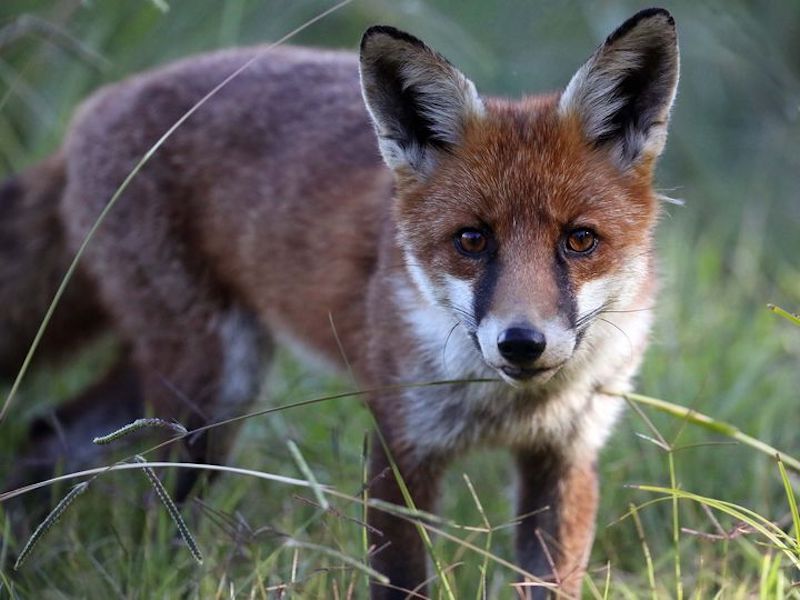
Responsible for killing newborn lambs and poultry, foxes once were a sought-after target when skin dealers were offering up to $40 a pelt. Photo: David Flannery.
When the price of fox skins peaked between $30 and $40 in the early 1970s a small group of Goulburn sharpshooters made a killing. They worked through the night in winter when the foxes’ fur was at its thickest.
Full of energy and enterprise, the young blokes earned twice their daytime salaries shooting. Some bought their first homes from the proceeds of fox skins, even though skinning and pegging out pelts was tedious.
One of them, Dennis Granger, became engrossed in shooting. His grandfather Harry Evans had introduced him to fishing, trapping rabbits and shooting. Later Dick Hawkins taught him how to ‘float’ a rifle’s barrel to ensure it did not touch any of the firearm’s wood and ‘bedding’ the weapon to keep its action dead level during firing. These preliminary steps kept his rifle firing with lethal accuracy.
Dennis learned to reload his ammunition, first inserting a fresh primer into a spent shell, then tipping an exact measure of gunpowder which he weighed into the shell, then capping it with a streamlined projectile.
He earned $260 a fortnight driving for the Department of Main Roads and his shooting mate Robert Wallace, best known as Wal made $90 a week as a fitter and turner. They each made much more money after work shooting with a spotlight. “You would shoot 400 foxes in a season, that was a lot of money in those days,” Wal said.
He made $12,000 from fox skins one year, enough to buy a block of land in Majors Drive, Goulburn. “The next year I bought all the bricks, all the windows, a heap of stuff,” he said.
A tank of fuel for Dennis’s Nissan four-wheel-drive cost about $10 – a third of the price of just one fox skin, giving the two shooters scope to cover many miles bagging foxes. “We used to run around Swallow Tail [Pass] at Towrang, back up Bannaby Road and all the back roads,” he said.
Working near Wingello Park at Marulan once, Brian asked the owners for permission to shoot their foxes. In the midst of lambing, they readily agreed.
“They were just everywhere,” Wal said. “Only a few lambs were born, they had just started lambing. Every one of them had been taken [by a fox]. I think we shot 40 there over two nights. It was a lot of foxes, I can’t remember the exact number.” Dennis added: “So they [owners] were happy, we were happy.”

Dennis Granger shoots the occasional deer but opposes shooting for the sake of firing a weapon. He says hunting must have a purpose, such as culling pests. Photo: John Thistleton.
Random breath testing was still a decade away and plenty of drivers on the roads at night were inebriated – including fox shooters. One night on Taralga Road on the top of Tarlo Hill, Brian and Wal came over a rise about 2 am to find two older shooters in the middle of the road having a fist fight. Going for one another hammer and tongs, they were too “blind mental drunk” to land a serious blow. The disagreement was over one of them earlier missing his shot at a fox. “They would have been skinning up afterwards and niggling each other,” Wal said, explaining the cause of the fight. Dennis and Wal stood watching as the swinging assailants ran out of puff.
Their focus each night was on bagging as many foxes as possible. Dennis said a .17 calibre rifle was ideal, and occasionally a bigger .22-250 rifle. “If it was a bit windy you would take the .22-250 with a bit heavier bullet,” he said. “On a still night you would take a .17 calibre,” he said. “Its projectile is fine enough to avoid skin damage to the fox. Its entry point would be the same diameter as a [slug gun’s] slug. They are doing about 4100 feet a second.”
The ideal shot would hit the fox halfway up the nose to cause minimal damage to its pelt. In this regard a fox helped whenever it turned to gaze at the spotlight. If on the trot, the hunter would give a slight whistle causing the fox to pause and look again at the light. Then bang! It was all over.

Dennis Granger and Robert Wallace grew up with firearms in the days when you could walk around Goulburn with a .22 rifle without causing alarm. Photo: John Thistleton.
Near Windellama one night, Dennis’s eager four-wheel-driving landed his trusty Nissan in the middle of a creek when the engine stopped. Not only was the battery flat, the crank handle for such emergencies had been left at home. Luckily the fitter and turner skills of Wal, and his workmate Brian Mills who accompanied them that night, were deployed to fashion a makeshift crank handle from the tyre jack over a fire, using a shifting spanner and rocks.
Adept at overcoming setbacks, Dennis and Wal accounted for hundreds of foxes. But the destructive introduced species now synonymous with guile has prospered too, no longer sought by the fashion industry.







